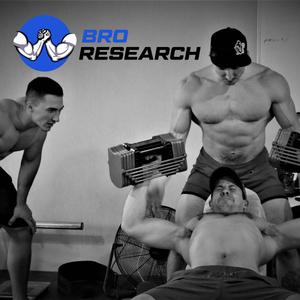
Bro Research Radio
Dr. Ben House
Intimate Internet Brosations that dive deep into the science of nuanced pivotal Bro topics.
- 57 minutes 33 secondsEpisode 30 - A Deep Dive into Gluten or FODMAPs with Dr. Tommy Wood
If you want to support the creation of this content you can find all the show notes and citations HERE.
or you can purchase either of our fully referenced case-study-based courses found HERE.18 May 2022, 10:00 pm - 1 hour 1 minuteEpisode 29 - The Down Low on Body Composition Measurements with Dr. Grant Tinsley
Many of you likely know that I love Rogue One type content. Where one line said in passing morphs into a much longer piece of content.
Down the rabbit hole we go…
You may have seen the two paragraphs below on Deconstruct Nutrition and this week’s conversation with Dr. Grant Tinsley and HERE is a deep dive into nuances of body composition metrics. He crushes it and I felt this content is so important I elected just to give this conversation away on the podcast.
“It is important to note that given the likely glycogen loss and accompanying fluid loss that comes from a significant energy deficit and early phase weight loss [1, 2], the potential edema of starting a resistance-training program [3], and the potential for day-to-day variance in lean body mass measurements via different body composition metrics [4-6] there is a considerable amount of noise in muscle data from the studies above, especially those that utilized untrained participants.”
From How Do We Actually Lose Body Fat?
“In practice, what this means is that if someone is pushing a caloric deficit in order to shed body fat while simultaneously starting or increasing their resistance training schematic I think we can expect to see a lot of chaos on the scale in the first few weeks and in most scenarios it is probably not really worth measuring any body composition metrics for at least 8 weeks and even then we likely can’t pick up significant changes in LBM because the error rates in LBM of the measurements are generally higher than the amount of muscle untrained individuals can gain in those timeframes [4, 7-11] (someone may be able to convince me that in certain scenarios skinfold or ultrasound measurements of subcutaneous fat every two to three weeks could be helpful.)”
From Is Weight Loss Without Exercise Unethical?
My main takeaways from this conversation:
· Rigorous standardization is fundamental to attaining useful body composition data.
· If someone is not consistent with their diet, fluid intake, and training they will very likely lack the ability to collect precise body composition data.
· The ability of these technologies to detect significant/real changes on the individual level will get more and more difficult as the degree of change becomes less and less. In most scenarios, dramatic weight loss and recomposition will very likely surpass both the technological and biological error, whereas it will likely be hard to say if someone gained 1 kg of FFM and lost 1kg of FM is significant.
· You can be more certain you are moving in the intended direction if multiple lines of data are showing similar trends.
Other references we mention in the podcast [12-14].
REFERENCES:
1. Heymsfield, S.B., et al., Voluntary weight loss: systematic review of early phase body composition changes. Obes Rev, 2011. 12(5): p. e348-61.
2. Muller, M.J. and A. Bosy-Westphal, Effect of Over- and Underfeeding on Body Composition and Related Metabolic Functions in Humans. Curr Diab Rep, 2019. 19(11): p. 108.
3. Damas, F., C.A. Libardi, and C. Ugrinowitsch, The development of skeletal muscle hypertrophy through resistance training: the role of muscle damage and muscle protein synthesis. Eur J Appl Physiol, 2018. 118(3): p. 485-500.
4. &
23 March 2022, 9:00 pm - 57 minutes 30 secondsEpisode 28 - Does Saturated Fat Increase LDL Cholesterol?
The full referenced accompanying Deconstruct Nutrition article to this podcast can be found HERE.
You can listen to hours and hours of Dr Tommy and I talking science nerdery in the Advanced Blood Chemistry Course.21 November 2021, 9:00 pm - 38 minutes 32 secondsEpisode 27 - Is Lifting Dangerous and How Much Muscle Do You Need To Cheat Death?29 August 2021, 3:00 pm
- 55 minutes 9 secondsEpisode 26 - CGMs and Fragility Narratives with Dr. Tommy Wood
If you like this kind of content sign-up for the Bro Research courses and you can catch up on way too many hours of Dr. Tommy Wood and Dr. Ben House trying to sell critical thinking and nuance over fear and myopic bollocks.
Food Fear has an objective price and we need to start controlling for it in our research designs and analyses.Main Open-Access Paper Reviewed:
Faerch K, Alssema M, Mela DJ, Borg R, Vistisen D. Relative contributions of preprandial and postprandial glucose exposures, glycemic variability, and non-glycemic factors to HbA 1c in individuals with and without diabetes. Nutr Diabetes. 2018;8(1):38Other Citations Discussed:
Park C, Pagnini F, Langer E. Glucose metabolism responds to perceived sugar intake more than actual sugar intake. Sci Rep. 2020;10(1):15633.
Ehrhardt N, Al Zaghal E. Behavior Modification in Prediabetes and Diabetes: Potential Use of Real-Time Continuous Glucose Monitoring. J Diabetes Sci Technol. 2019;13(2):271-275.
Bailey KJ, Little JP, Jung ME. Self-Monitoring Using Continuous Glucose Monitors with Real-Time Feedback Improves Exercise Adherence in Individuals with Impaired Blood Glucose: A Pilot Study. Diabetes Technol Ther. 2016;18(3):185-193.
Yost O, DeJonckheere M, Stonebraker S, et al. Continuous Glucose Monitoring With Low-Carbohydrate Diet Coaching in Adults With Prediabetes: Mixed Methods Pilot Study. JMIR Diabetes. 2020;5(4):e21551.
Ehrhardt N, Al Zaghal E. Continuous Glucose Monitoring As a Behavior Modification Tool. Clin Diabetes. 2020;38(2):126-131.
Vistisen D, Kivimaki M, Perreault L, et al. Reversion from prediabetes to normoglycaemia and risk of cardiovascular disease and mortality: the Whitehall II cohort study. Diabetologia. 2019;62(8):1385-1390.13 July 2021, 10:00 pm - 46 minutesEpisode 25 - Iron Culture Epilogue
Check Out Episode 93 on the Cult and Then Peep This!
16 November 2020, 5:00 pm - 1 hour 21 minutesEpisode 24 with Kyle Dobbs - The Business of Fitness
Does this title make you puke a little in your mouth?
If so, you should definitely listen.
In this episode we jam on…
For trainers or health professionals that struggle with the idea of selling what’s the play?
If someone’s business is location dependent or geogeaphically limited what should they focus on to gain new customers? Is it even worth it to spend time on social media for business purposes?
According to SmallBizTrends 83% of new business comes from word of mouth referrals. How key are word of mouth referrals in this new online fitness business space?
The power of polarization and why no one cares about tooth brushes. If you’re for everyone you’re for no one. How key is defining your client avatar?
If our goal is getting more clients why do so many of trainers try to look cool in front of our fitness friends and clients with fancy vocab and arguing about the minutia when we should be offering solutions to problems our current and potential clients care about?
How has COVID changed the fitness landscape? Is the best play to follow the masses and start offering online programming? A subscription monthly newsletter? Razorblades! Or would we be better off swimming the other direction, thinking outside the box, and opening microgyms or buying a u-haul and filling it with equipment and driving around town?
Or maybe we all just start mowing lawns?
How do you avoid burn out working online?
What still gets you excited about this fitness and nutrition space?5 June 2020, 4:00 pm - 1 hour 16 minutesEpisode 23 with Kassem Hanson - Metabolic Stress as a Potentiator of Hypertrophic Gains
In fitness and nutrition, minute details can drive us apart, but looking practically at this beautifully intricate question of getting more bigger can help bring us together.
Metabolic stress is masochistically fun and mechanistically complicated.
And yes we don't really know if these strategies will have an independent effect outside of the mechanotransduction model.
BUT around 30-40% of 1RM is very likely going to equate on a set volume basis to higher loads in terms of hypertrophy so you don't have much to lose outside of weight on the bar in lower rep ranges and may potentially have a lot to gain by differentiating your training stimulus.
Therefore, if you are extremely "risk" averse and want to only train in the muscular tension bean counter rep and weight model go for it!
If you want to NOT even "waste" some portion of your training year experimenting, having fun, and playing with different strategies you can be very confident that you will not shrivel up and die...in fact at the very least you may even be able to build a better pump and you may potentiate your ability to drive more adaptation via the mechanotransduction model.
References:
https://pubmed.ncbi.nlm.nih.gov/29564...
https://www.ncbi.nlm.nih.gov/pmc/arti...
Coach Kassem of N1 Education also has some fantastic charts and tools that he uses to break this complex subject down into logical pieces and fun practical applications.22 May 2020, 5:00 pm - 1 hour 18 minutesEpisode 22 with Evan Peikon - Slaying Energy System Sacred Cows
This episode is a banger and we get right into it. You may want to read through the questions and the Trello board first before listening. Ryan and I are just dumb enough on this topic to ask the right questions.
Trello Board provided by Evan.
https://trello.com/b/nir9R2O0/bro-res...
Outline of the Episode:
What is wrong with the classic reductionistic view of energy system training?
Ie: less than 10s=phosphagen system; 10s-2mins=glycolytic, 2mins=oxidative what is really happening?
What is the true role of lactate?
Why do you think Shulman’s glycogen shunt hypothesis didn’t go viral in the early 2000s? It’s hardly cited which is quite odd to me.
Is this conventional mode view of energy systems even helpful to use for programming purposes?
How does this new model change how you train your endurance athletes?
Hypertrophy “athletes”?
How do you respond to those who NIRS without doppler measurements of blood flow is not very useful and NIRS is may only be getting superficial readings?
There seems to be a push recently to avoid “glycolytic” training as it is proposed to be more “damaging” and less adaptive when compared alactic and aerobic methods….thoughts?
Thoughts on why some Crossfitters get huge and how their limitations may explain their hugeness
A case for local hypoxic (BFR) training for hypertrophy
Bjorsen, 2019--Type 1 fiber hypertrophy w occlusion training. Refer to metabolic stress podcast
Would some people benefit more than others?
Capillarity and hypertrophic potential?
Sjinders, 2017 Capillary to fiber distance predictive of hypertrophy in older males
Any trends with MOXY that may support this
My hypothesis: anecdotally seems like the muscles that grow the most in people are the ones that they get a pump in the easiest…
Cardio for hypertrophy
If metabolic stress is hypertrophic could we just do 1min echo bike repeats for quads?
WHY do some cyclists have such massive quads BRO?!14 May 2020, 2:00 am - 1 hour 15 minutesEpisode 21 with Jeb Johnston and Dean Guedo - How to be an Ethical FitFluencer
In this episode, we take on...
What does it mean to be a fitness or nutritional professional in our current fitspiration highlight reel social media world?
The importance and danger of social proof. Dean's Incessant Pandering. Ryan's Resistance. Ben's regretful not selling selling and Jeb's Aging Out.
Defining your why for creating and sharing content?
-Reciprocal Altruism is a constant and Ego is always there and that is OK.
Clarifying and sticking to your social media philosophies?
Extreme Reach Barriers and Imposter Syndrome. You don’t have to be perfect? Do the work. Get the rough draft down on paper. Then you can hone the message and edit, revise, and decide if you want to actually share it.
In the face of cognitive dissonance and confirmation bias the importance of searching out and finding your own answer.
The juxtaposition between click heavy myopic content and contextual integrity-driven content and deeply knowing both sides of the game so if you want to...you can play it well with limited REGRATS.
*Selling the shit out of the narrative with a thoughtful limitation and context section at the end.
The ladder of short, medium, and long-form content.
Find your medium! Discuss the positives and negatives of audio, video, and writing.
Finding your passion vs. finding your NOT passions.
In the end...
"Make Good Art!" - Neil Gaiman because if you don’t get the money or the fame at least you have the work.7 May 2020, 3:00 pm - 1 hour 28 minutesEpisode 20 with Kassem Hanson - Is The Squat the Best Exercise For Quad Hypertrophy?
Or is the squat a decent exercise to develop the quads and glutes until it’s not?
What is the muscular limiter for the barbell squat? Is it even a muscle?
Episode 20 Notes
“From these data, it is unclear if strengthening a single muscle group (e.g., knee extensors) would increase squat strength, as the strength of one muscle group does not appear to relate more strongly to squat strength than another…Net joint moments observed during the squat do not approach 100% of what each joint can produce in isolation…The relationship between individual joint strength and multi-joint strength may be highly nonlinear and paradoxical, owing to the increased degrees of freedom of multi-joint movements…Humans may be less than the sum of their parts when it comes to multijoint force production”
Vigotsky et al. 2018
It seems like counter to what people think that by putting the barbell further away from the center of mass you are probably allowing for a more upright torso…until you aren’t. Meaning we actually see more and more erector spinae activity as you move the bar further out so the likely limiter here is just your ability to hold the position under increased fatigue and loading.
https://journals.lww.com/nsca-jscr/Fu...
and we probably can’t trust our eyes here for telling when people lose lumbar “neutrality” anyways.
https://www.ncbi.nlm.nih.gov/pubmed/2...
The glutes aren’t really working much in the bottom of the squat (the hardest part of the lift) in their lengthened position…it looks like that is primarily adductor magnus. So the glutes really wouldn’t be the limiter to extend the hip ever in the squat and wouldn’t even be used much until after 90 degrees and their force output above 90 is likely way more than anything we could put on the bar anyways.
https://www.ncbi.nlm.nih.gov/pubmed/3...
https://www.ncbi.nlm.nih.gov/pmc/arti...
https://www.ncbi.nlm.nih.gov/pmc/arti...
https://www.researchgate.net/publicat...
https://www.ncbi.nlm.nih.gov/pubmed/2...
Could the muscular limiter in a barbell squat variant ever really be the quads?
We generally see people tip forward as they start to fatigue out later in29 April 2020, 9:00 pm - More Episodes? Get the App
Your feedback is valuable to us. Should you encounter any bugs, glitches, lack of functionality or other problems, please email us on [email protected] or join Moon.FM Telegram Group where you can talk directly to the dev team who are happy to answer any queries.
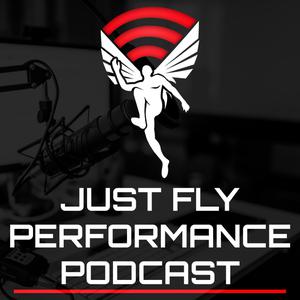 Just Fly Performance Podcast
Just Fly Performance Podcast
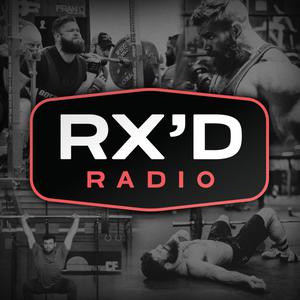 RX'D RADIO
RX'D RADIO
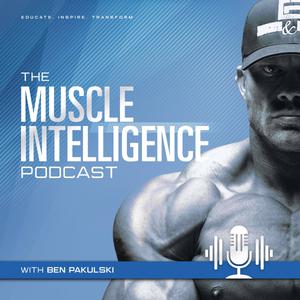 Muscle Intelligence
Muscle Intelligence
 Iron Culture
Iron Culture
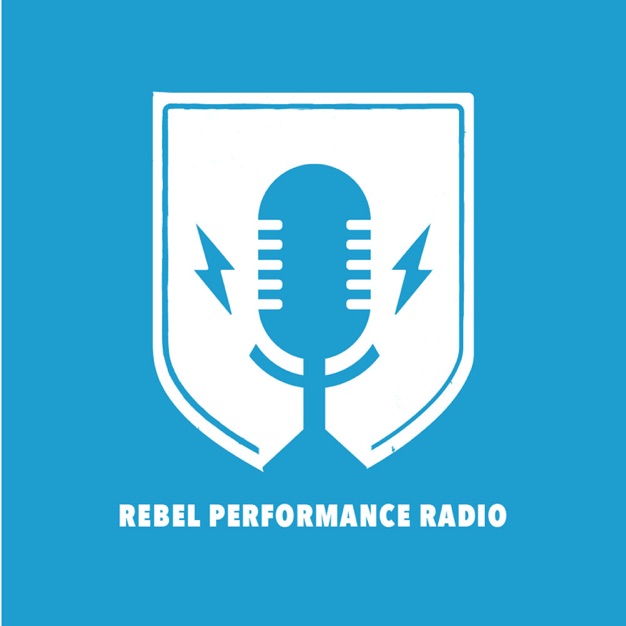 Rebel Performance Radio
Rebel Performance Radio
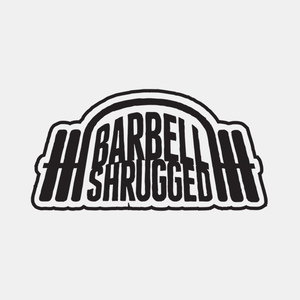 Barbell Shrugged
Barbell Shrugged